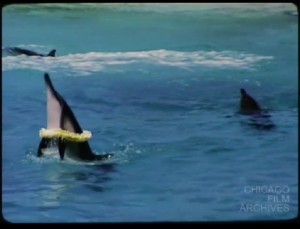
"2 part edited travel footage taken in numerous Hawaiian locations. Focuses on events and people as well as the natural scenery. Includes traditional dancing, a festival and a visit to an aquarium as well as religious locations." Chicago Film Archives.
"A scientific expedition to Mexico for a study of the animals, reptiles and birds. Our visit for the most part is in the rural or wilderness areas but we do get into the market place and we see some of the ancient ruins. A pictorial review of a great many of species of wild life which we rarely see as many of us are afraid to visit the habitat of those creatures. The close-up photography puts the small creatures almost on our noses" PSA Journal, Nov. 1959, 48.
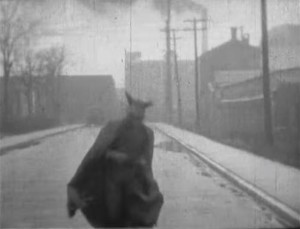
Hell Bound Train "depicts the devil as the train's engineer both driving his locomotive toward hell and tempting the sinner-passengers that occupy various cars on the train. The film is divided into episodes each one representing a different kind of sin or sinner and set in a corresponding car of the train" Tepperman, 233-234.
Edited film "chronicling an airstream caravan through Central America (Mexico, Guatemala, El Salvador, Panama, Costa Rica). Film includes many views of scenic landscapes, mountain roads, cities and villages, ruins (Kabah, Uxmal, Dzibichaltun, Chichen Itza) and historic landmarks and airstream trailers tavelling or in recreational vechicle parks. In Guatemala they visit the villages Solola and Panajachel near Lake Atitlan and and town of Antigua. Scenes also include marketplaces, churches and chuch-life, a woman weaving, local crafts, washing clothing at public fountains" Human Studies Film Archives, Smithsonian Museum.
"Item is an audio-visual production of Dr. Willinsky's Hellenic cruise near Greece with his wife, Sadie. Production contains footage of the ancient ruins and other landmarks they visited, including sites in Mycenae, Pergamum, Athens, Troy and Gallipoli. In the form of a travelogue, music and Dr. Willinsky's commentary accompanies images for about the first 30 minutes. The remainder of the production is mute." Ontario Jewish Archives.
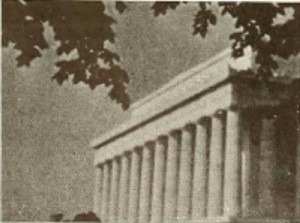
"In Holiday in Dixie, Morton H. Read, a Yankee from Massachusetts, has so well understood the essence of the Old South that he has called back from its storied urns a breath which inspires the whole film so intimately that Southern hats should come off to him. His remarkable sympathy with the remains of the Cavalier era has made it possible for him to present them with conviction and fire. Mr. Read first shows us Washington with its dignity and spaciousness, by carefully chosen shots. He pauses for an inspection of the caverns at Luray, and then he goes on to study the lovely cities of Lexington and Williamsburg. We reach the deep South at Charleston and the Ashley River; it is in this part of the film that its maker establishes his vivid emotional identity with a past epoch. A sequence of Negro rural life is brilliantly handled, and the film comes to an amazing climax with scenes of the trees and flowers in the gardens of ancient estates. With music and with a narrative that sets a new standard in this newer phase of personal movies, the mood of the film is not only sustained, but amplified, so that, after the projection, one wonders which of the three — film, music or words — one will longest remember." Movie Makers, Dec. 1940, 599-600.
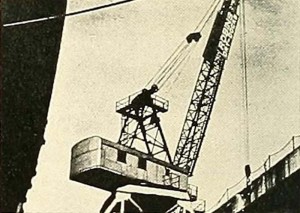
"In From the Sea, produced by Fenno Jacobs for Todd Shipyards Corporation, establishes a precedent this year, for it is the first 16mm sound film, directly recorded in this medium, to be offered for Ten Best consideration in the Special Class. But the fact that this film carries its own directly recorded sound is only one of its many unusual qualities. It tells an interesting and dramatic story of the manifold activities that make up a working day in a great shipyard, where the monster ships are hauled from their native element without ceremony and attacked by a swarm of workers who specialize in every known form of ship repair. By handling this material with great technical facility and by fine editing tempo, excellent choice of camera viewpoint and a flair for cinematic effectiveness, Mr. Jacobs has succeeded in creating an industrial picture which has a high general interest. Among the many noteworthy sections of this film is the sequence which shows the workers' lunch hour. It is outstanding for its fine cutting and for the dramatic pause which creates a respite from the Titanic activities of the working hours. Interesting also is the sound accompaniment which is an integral part of the film and which, in addition to a spoken commentary and spot recording of shipyard sounds, includes well chosen excerpts from Stravinsky's suite, The Fire-Bird, to establish a modern mood." Movie Makers, Dec. 1937, 627.
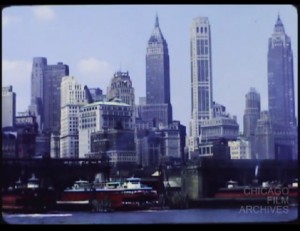
"Two part edited travelogue taking place in the Hudson Valley area. Part one begins at Coney Island, and then takes viewers through New York City before heading to places such as West Point and Poughkeepsie where cough drops are being made. Part two Includes much footage on Hudson river, the process of manufacturing wallpaper at Imperial Color and a visit to the North Pole theme park." Chicago Film Archives.
"Item is an audio-visual production of Dr. Willinsky's trip to Israel. In the form of a travelogue, Willinsky accompanies footage of landmarks, ruins and the local population with audio commentary. The production includes a brief discussion of the formation of the state of Israel and features various cities, such as, Jerusalem and Tel-Aviv. Sadie [Willinsky] is occassionally spotted in the footage interacting with locals and visiting the homes of friends." Ontario Jewish Archives.
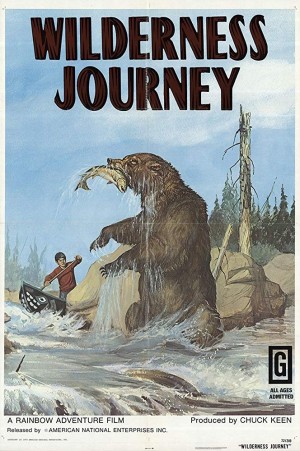
"Joniko and the Kush-Ta-Ka, the PSA Film of the Year, is a story of Alaska by a native, Charles Keen of Juneau. In 45 minutes of color and spectaculars, Mr. Keen shows us an Alaska that is beautiful throughout the seasons of the year. The law of nature is never questioned and only strength and courage survive. As if all this as not enough in the way of survival difficulties, there is added the threat of the Kush-Ta-Ka. You struggle, struggle some more and pray with young Joniko in his adventuresome trip to get help. It is truly a film of the year" PSA Journal, Nov. 1969, 56.
Total Pages: 15